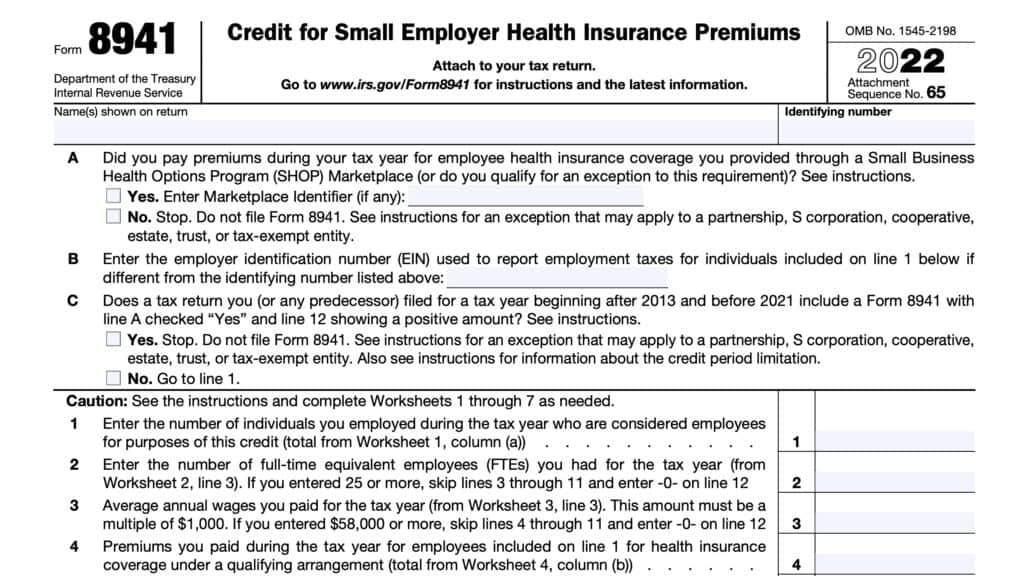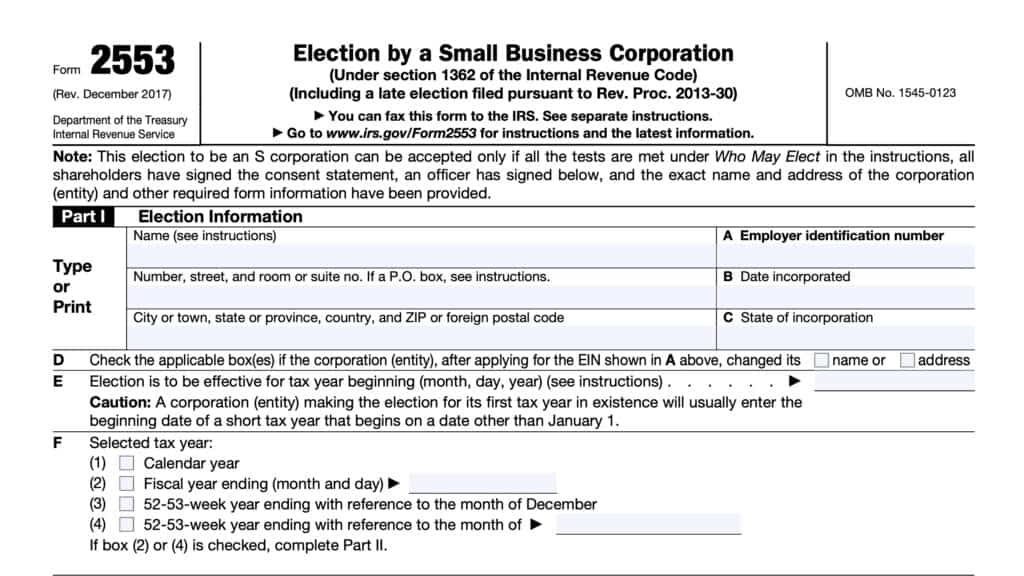IRS Form 8826 Instructions
The Internal Revenue Code allows small business owners who invest in ADA compliance to take an annual tax credit. Eligible small businesses may claim this non-refundable credit, known as the disabled access tax credit or disability access tax credit, on IRS Form 8826 for each taxable year in which they incur eligible expenditures.
In this article, we’ll walk through the disability tax credit, including:
- How to take advantage of this credit on IRS Form 8826
- Examples of eligible expenses and situations where small businesses may claim the maximum tax credit
- Frequently asked questions about this tax form
Let’s start with a walkthrough of the tax form itself.
Table of contents
How do I complete IRS Form 8826?
Line 1: Total eligible access expenditures
In Line 1, enter the total eligible access expenditures that you paid or incurred during the calendar year.
These expenditures may include expenses that you paid or incurred in one or more of the following:
- To remove barriers that prevent a business from being accessible to or usable by individuals with disabilities;
- To provide qualified interpreters or other methods of making audio materials available to hearing-impaired individuals;
- To provide qualified readers, taped texts, and other methods of making visual materials available to individuals with visual impairments; or
- To acquire or modify equipment or devices for individuals with disabilities.
These eligible access expenditures may not be claimed as a deduction in figuring taxable income, capitalized, or used in figuring any other tax credit.
Line 2: Minimum amount
The minimum amount, $250, represents the floor for this tax credit. Generally, taxpayers who spend less than $250 will not be eligible for the disabled access credit.
This number should automatically appear in the tax form.
Line 3
Subtract the amount in Line 2 from Line 1. If this results in zero or a negative number, enter ‘0.’
Line 4: Maximum amount
The maximum amount of expenditures that you may include for this tax credit is $10,000. This is already entered in Line 4 for you.

Line 5
Enter the smaller of Line 3 or Line 4.
Line 6
Multiply the Line 5 number by 50%. Enter the result here.
Line 7: Disabled access credit from partnerships and S-corporations
Enter any amount reported to you as a tax credit passed to you from a passthrough entity, such as a partnership or S-corporation.
Line 8
Add Line 6 and Line 7, then enter the total here. However, the maximum credit in a given year is $5,000. Do not enter a number greater than $5,000.
For partnerships and S corporations, report this number on Schedule K. All other taxpayers should report this number on IRS Form 3800 (General Business Credit), Part III, Line 1e.
Examples of access improvements eligible for the disabled access credit
The Americans with Disabilities Act provides broad and general guidance for businesses who are trying to improve access for customers or employees with disabilities. According to the federal government, businesses of any size who directly provide goods or services to the general public, must make reasonable accommodations for persons with disabilities.
Reasonable accommodations is a purposefully vague term, which differs from business to business. However, the general understanding is that reasonable accommodations should not create an undue burden on the business owner.
Below are some examples of situations where different types of physical modifications may help improve access without presenting an undue burden on the business owner.
Example A: Reasonable accommodations for deaf or hard-of-hearing persons
Let’s imagine that Tom is an accountant. He decides to start his own tax preparation firm in the local area.
One of Tom’s first clients, Nancy, is deaf. In their first year working together, Tom acknowledges Nancy’s deafness by allotting extra time for their meetings, writing down notes, and taking the time to ensure that Nancy understands and has the chance to weigh in on her tax situation.
Even though Tom did not need to spend more money, this would be considered a reasonable accommodation under ADA guidelines, as Tom is able to meet all of Nancy’s needs.
As Tom’s practice grows, he notices that Nancy, a very satisfied customer, starts referring most of her deaf friends to Tom for his services. After a point, Tom is no longer able to set aside extra time for each deaf client without impacting the rest of his business.
But he must still find a way to provide reasonable accommodations. Here are some low-cost ways he may be able to do so:
- Use automation and technology to help with data collection
- Scheduling introductory meetings through an interpretive service that provides sign language interpreters
- Remote services provided for telephone conversations are often free and can be convenient for all parties
- Providing checklists that the clients can work through at their convenience
- Allowing the client to reach out via email
Almost all of these are services that Tom would provide to all clients. However, if he did not already do so, these could also represent reasonable accommodations.
Example B: Reasonable accommodations for visually impaired persons
In this example, John owns a small restaurant, which many locals recognize as one of the best in his town. After a while, he notices that some of his most regular customers belong to the local chapter of the National Federation of the Blind.
To improve his service, John asks the local president, Tim, for his thoughts on some ways to make his restaurant more accessible to visually impaired persons. Tim gave some of the following suggestions:
- Hire a web consultant to help make John’s restaurant’s internet site a more accessible website, removing barriers that most people don’t even know about
- Creating large print menus for easier reading
- Improving restaurant lighting
- Reorganizing the restaurant to remove unnecessary physical barriers
After further discussion, John decides that the web consultant might be too expensive, but decides to make all of the other modifications, which were already in his restaurant’s annual budget. These would be considered reasonable accommodations and help John’s restaurant become ADA compliant.
Example C: Reasonable accommodations for persons with limited mobility
Charlie is a storeowner, who operates his storefront business in a tourist-heavy part of town. As a result, he sees a wide variety of customers with varying degrees of mobility limitations.
In this case, Charlie may have to balance several competing priorities, including:
- Legal limitations on certain architectural adaptations
- Impacts of barrier removal on his business
- Financial ability to pay for expensive accommodations, like installing a wheelchair ramp in an older building
However, the 2010 ADA Standards for Accessible Design contain a wide variety of generally acceptable standards that reduce physical barriers and improve access for persons with physical disabilities.
Charlie can certainly use this as a starting point to poll customers, identify areas of most concern, and address certain deficiencies without creating an undue hardship on his business.
Video walkthrough
Watch this informative video to learn more about claiming the ADA tax credit using IRS Form 8826.
Frequently asked questions
For purposes of the disabled access credit, eligible access expenditures are amounts paid or
incurred by the eligible small business to comply with applicable requirements under the Americans With Disabilities Act of 1990.
For purposes of this tax credit, an eligible small business is one that had gross receipts for the preceding tax year of $1 million or less, or had no more than 30 full-time employees
in the previous year.
Where can I find IRS Form 8826?
You may find this tax form on the IRS website. For your convenience, we’ve attached the latest version of IRS Form 8826 to this article.
Related tax articles
This tax form is one of the fillable tax forms provided by the Internal Revenue Service, to help taxpayers reduce their tax preparation costs. To see more forms like this, visit our free fillable tax forms page, where you’ll also find articles like this.
Unlike the IRS, our articles contain step by step instructions for each tax form, as well as video walkthroughs. You can also check out all of our videos by subscribing to our YouTube channel!



